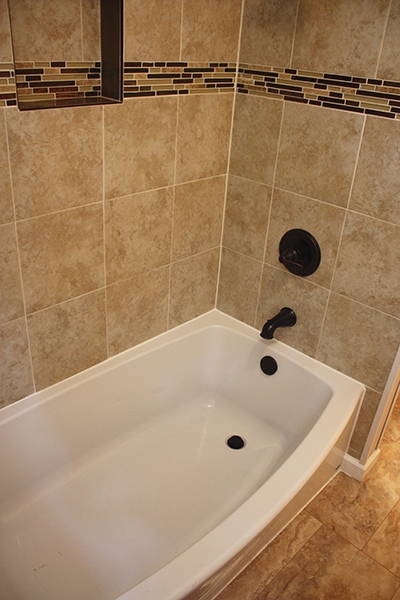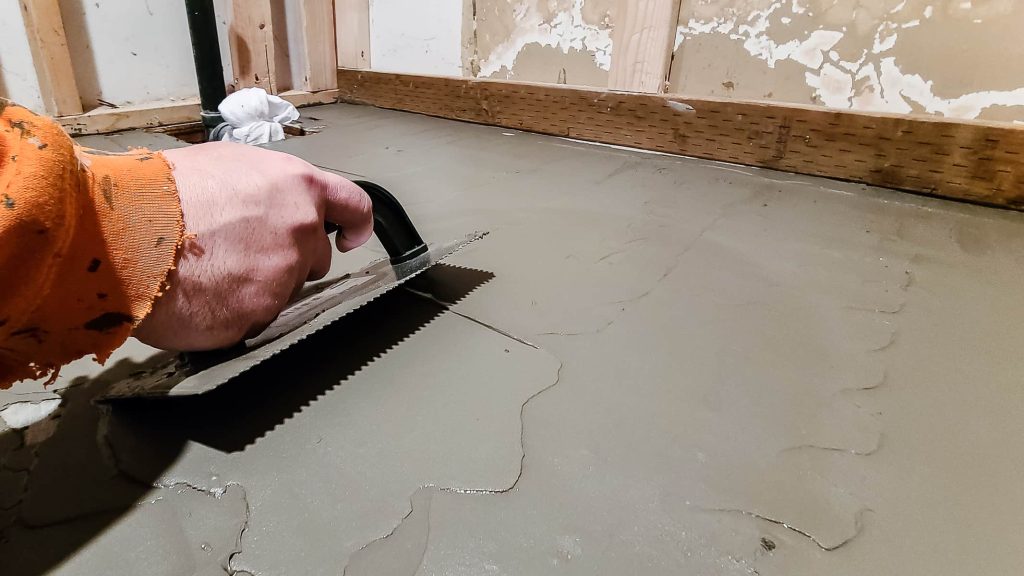Are you currently searching for tips about How to Install a Bathtub Yourself?

Setting up a bath tub isn't precisely rocket science, however it does need solid plumbing, woodworking, and occasionally, tiling skills. Changing an old bathtub with a new one is also a reasonably tough task. If the old tub is readily obtainable, the job can relocate speedily; if you need to open a wall to get rid of the old bathtub and position the new tub, the job is a lot harder. In either case, the project is within a house handyman's abilities, although you will certainly require an assistant to vacate the old tub and also embeded in the new one. Make sure you have actually certified yourself for the job as well as are comfortable attempting it. As opposed to hiring a specialist to take control of a halfway-completed job, it is much better to take into consideration using one prior to you start. Chances are you might require a specialist plumber to make tube connections.
This short article will help you mount a brand-new tub in your shower room if you have actually currently gotten a brand-new tub and do not need to change the setup of your previous water pipes.
Your devices and also material list must comprise the following:
Getting ready for the Installment
Firstly, the supporting structure provided with the bath ought to be fitted (if needed) according to the supplier's instructions. Next, fit the taps or mixer to the bathtub. When fitting the tap block, it is necessary to ensure that if the tap features a plastic washer, it is fitted between the bath as well as the taps. On a plastic bath, it is also sensible to fit a supporting plate under the faucets device to prevent strain on the bath tub.
Fit the adaptable faucet adapters to the bottom of both taps using 2 nuts and olives (in some cases supplied with the bathtub). Fit the plug-hole electrical outlet by smearing mastic filler round the sink outlet hole, and then pass the electrical outlet with the hole in the bath. Make use of the nut supplied by the manufacturer to fit the plug-hole. Check out the plug-hole outlet for an inlet on the side for the overflow pipeline.
Next, fit completion of the versatile overflow pipeline to the overflow outlet. Afterwards, screw the pipe to the overflow face which must be fitted inside the bath. Make sure you use every one of the supplied washing machines.
Connect the trap to the bottom of the waste electrical outlet on the tub by winding the string of the waste outlet with silicone mastic or PTFE tape, and also screw on the trap to the electrical outlet. Attach the bottom of the overflow tube in a comparable manner.The bath ought to currently prepare to be fitted in its last placement.
Removing Old Taps
If you need to change old faucets with new ones as a part of your installment, after that the first thing you should do is disconnect the water system. After doing so, turn on the taps to drain any water remaining in the system. The process of eliminating the existing faucets can be fairly problematic as a result of the limited gain access to that is often the case.
Utilize a basin wrench (crowsfoot spanner) or a tap tool to undo the nut that links the supply pipes to the taps. Have a fabric prepared for the remaining water that will certainly come from the pipelines. When the supply pipelines have actually been eliminated, use the same tool to loosen the nut that holds the faucets onto the bath/basin. You will need to stop the solitary taps from turning during this procedure. When the faucets have been gotten rid of, the holes in the bath/basin will have to be cleaned of any kind of old sealing substance.
Before going on to fit the new taps, compare the pipe connections on the old taps to the new faucets. If the old taps are longer than the new taps, after that a shank adapter is needed for the brand-new taps to fit.
Mounting the Bath tub
Making use of the two wood boards under its feet, put the bathtub in the required setting. The wood boards are valuable in equally spreading out the weight of the bath tub over the area of the boards as opposed to concentrating all the weight onto four tiny points.
The next objective is to ensure that the bathtub is leveled all round. This can be attained by checking the spirit level and adjusting the feet on the bathtub until the spirit level reads level.
To mount taps, fit the bottom of the outermost versatile tap adapter to the suitable supply pipe by making a compression sign up with; after that do the exact same for the various other faucet.
Turn on the water and examine all joints as well as new pipework for leaks as well as tighten them if necessary. Load the tub as well as also examine the overflow outlet and also the regular outlet for leakages.
Lastly, deal with the bath paneling as defined in the producer's user's manual. Tiling and securing around the bathtub ought to wait till the bath tub has actually been used a minimum of when as this will settle it right into its final placement.
Suitable New Taps
If the tails of the new taps are plastic, after that you will certainly require a plastic connector to prevent damages to the string. One end of the connector fits on the plastic tail of the tap and the other end provides a connection to the existent supply pipelines.
If you require to fit a monobloc, after that you will require minimizing couplers, which links the 10mm pipe of the monobloc to the typical 15mm supply pipeline.
Next off, position the tap in the mounting opening in the bath/basin guaranteeing that the washers are in area in between the faucet as well as the sink. Protect the faucet in position with the manufacturer provided backnut. Once the faucet is firmly in place, the supply pipes can be connected to the tails of the taps. The taps can either be attached by utilizing corrugated copper piping or with normal faucet adapters. The former kind should be linked to the faucet ends first, tightening up just by hand. The supply pipelines can later be linked to the various other end. Tighten up both ends with a spanner after both ends have been linked.
Tiling Around the Tub
In the location where the bath meets the ceramic tile, it is necessary to seal the joins with a silicone rubber caulking. This is necessary as the fitting can move enough to break a stiff seal, triggering the water to permeate the wall surface in between the bathroom and also the tiling, resulting in complications with dampness and feasible leaks to the ceiling listed below.
You can choose from a variety of coloured sealers to assimilate your components as well as installations. They are offered in tubes and cartridges, as well as can sealing spaces approximately a size of 3mm (1/8 inch). If you have a bigger void to fill up, you can load it with twists of drenched newspaper or soft rope. Keep in mind to always load the tub with water prior to sealing, to enable the motion experienced when the tub remains in usage. The sealant can split relatively very early if you do not consider this activity prior to sealing.
Alternatively, ceramic coving or quadrant floor tiles can be used to edge the bathroom or shower tray. Plastic strips of coving, which are easy to use as well as reduce to size, are additionally easily available on the market. It is advisable to fit the floor tiles making use of water-resistant or water resistant sticky and also cement.
Bathtub Installation
How Important Is A Bathtub To Your Home?
High-quality baths, showers, and other bathroom updates are necessary when considering a smart investment in your home. It’s a room that you go to every day and one that is constantly being used by guests.The bathroom is one of the top trafficked rooms in a home and also one of the most valuable in terms of home resale.
Install Piping Before Tub
You will be using your existing drain and waste vent system, but pipes required include the hot and cold water supply lines and a pipe leading to a shower head. A mixing valve and shower head are also needed. Air chambers may be required.
Position the Tub
Lower the tub into place so that the continuous flange fits against the wall studs and rests on 1’x4' or 2’x4' supports. Anchor the tub to the enclosure with nails or screws inserted through the flanges into the studs.
NOTE: Remember, bathtubs and shower stalls may require support framing. A bathtub filled with water is extremely heavy, so check building codes and framing support before installing the tub.
Assemble Drain Connections
Assemble the bathtub drain connections by connecting the tub overflow with the tub drain above the trap, not beyond it. The trap will have a compression fitting that screws over the arm of the overflow assembly.
Place a Pipe For the Shower Head
First, locate a brass female threaded winged fitting and attach it to a framing support via a screw or a nail. Then run a pipe up the wall for the shower head. Sweat or solder the other side of the brass fitting to the top of the pipe.
Attaching Hot and Cold Water Lines
Attach your water lines for both hot and cold by sweating these directly into the hot and cold ports of the mixing valve. The mixing valve will be how water enters the tub’s system, not by the pipes themselves.
Install the Spout
Extend a piece of 1/2 inch pipe, or whichever length is specified in the manufacturer’s instructions, for the tub spout. Sweat on a male threaded fitting at the end of the pipe or use a brass nipple of the proper length and a 1/2 inch cap.
NOTE: At this point you should have your rough-in plumbing work inspected before proceeding further.
Check For Leaks
Restore the water pressure and check the drain connection and the supply pipes for any sign of leaking.
estore the Bathroom Wall
Replace the wall with moisture-resistant drywall as a base for your wall covering. Seal the joints between the wall and your new tub with silicone caulk as protection against water seepage.
https://www.berkeys.com/2016/12/02/bathtub-installation-dallas/

Hopefully you liked our piece on How to Install a Bathtub. Many thanks for finding the time to browse our article post. Enjoyed reading our blog entry? Please share it. Let another person locate it. Thanks a lot for your time. Visit us again soon.
Need help? Dial now.